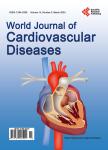A Novel Approach to Heart Failure Prediction and Classification through Advanced Deep Learning Model
A Novel Approach to Heart Failure Prediction and Classification through Advanced Deep Learning Model作者机构:Dubai United Arab Emirates
出 版 物:《World Journal of Cardiovascular Diseases》 (心血管病(英文))
年 卷 期:2023年第13卷第9期
页 面:586-604页
学科分类:0711[理学-系统科学] 07[理学] 08[工学] 081101[工学-控制理论与控制工程] 0811[工学-控制科学与工程] 071102[理学-系统分析与集成] 081103[工学-系统工程]
主 题:Heart Disease Prediction Cardiovascular Disease Machine Learning Algorithms Lazy Predict Multilayer Perceptrons (MLPs) Data Science Techniques and Analysis Deep Learning Activation Functions
摘 要:In this study, the author will investigate and utilize advanced machine learning models related to two different methodologies to determine the best and most effective way to predict individuals with heart failure and cardiovascular diseases. The first methodology involves a list of classification machine learning algorithms, and the second methodology involves the use of a deep learning algorithm known as MLP or Multilayer Perceptrons. Globally, hospitals are dealing with cases related to cardiovascular diseases and heart failure as they are major causes of death, not only for overweight individuals but also for those who do not adopt a healthy diet and lifestyle. Often, heart failures and cardiovascular diseases can be caused by many factors, including cardiomyopathy, high blood pressure, coronary heart disease, and heart inflammation [1]. Other factors, such as irregular shocks or stress, can also contribute to heart failure or a heart attack. While these events cannot be predicted, continuous data from patients’ health can help doctors predict heart failure. Therefore, this data-driven research utilizes advanced machine learning and deep learning techniques to better analyze and manipulate the data, providing doctors with informative decision-making tools regarding a person’s likelihood of experiencing heart failure. In this paper, the author employed advanced data preprocessing and cleaning techniques. Additionally, the dataset underwent testing using two different methodologies to determine the most effective machine-learning technique for producing optimal predictions. The first methodology involved employing a list of supervised classification machine learning algorithms, including Naïve Bayes (NB), KNN, logistic regression, and the SVM algorithm. The second methodology utilized a deep learning (DL) algorithm known as Multilayer Perceptrons (MLPs). This algorithm provided the author with the flexibility to experiment with different layer sizes and activation



